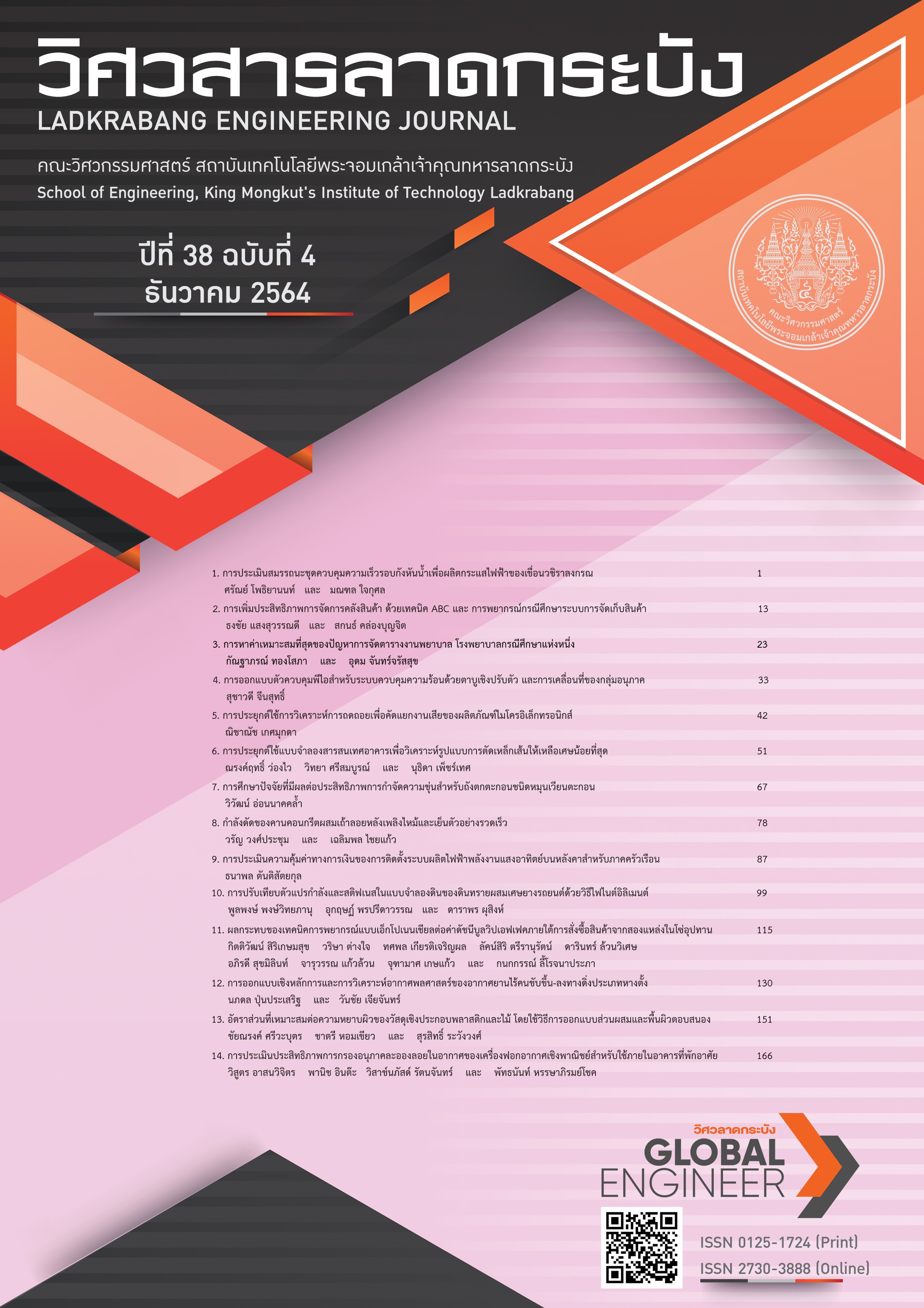Conceptual Design and Aerodynamic Analysis of Tail-Sitter VTOL UAV
Keywords:
Tail-Sitter VTOL UAV, Conceptual Design, Aerodynamics, Computational Fluid DynamicsAbstract
Tail-Sitter VTOL unmanned aerial vehicle (Tail-Sitter VTOL UAV) is one of the most popular UAV novel technology for various missions. Compact size, light weight, user-friendly, and reasonable flight endurance of this configuration are the main reasons for many applications. However, design methodology to meet the mission’s requirements for this type of UAV is the most difficult and challenge, especially complexities of the design processes. The purpose of this paper is to develop a conceptual design process for Tail-Sitter VTOL UAV. This methodology is simple and straightforward methodology to generate a design procedures and performance constraint diagram for selecting the critical performance parameters for Tail-sitter VTOL UAV systems. Moreover, to ensure the design methodology, computational fluid dynamics (CFD) is also integrated into design processes to analyze the aerodynamics of layout design. It also allows the designer to verify initial aerodynamic estimations and performance analysis. As a result, this methodology provides rapid selection of the optimum preliminary sizing parameters without the complexities compared with the traditional numerical optimization methods.
References
J. L. Forshaw and V. J. Lappas, “Architecture and systems design of a reusable Martian twin rotor tailsitter,” Acta Astronautica, vol. 80, pp. 166–180, 2012, doi: 10.1016/j.actaastro.2012.05.008.
R. H. Stone, “The T-wing tail-sitter unmanned air vehicle: from design concept to research flight vehicle,” Journal of Aerospace Engineering, vol. 218, no. 6, pp. 417–433, 2004 doi: . 10.1243/0954410042794920
K. C. Wong, J. A. Guerrero, D. Lara and R. Lozano, “Attitude stabilization in hover flight of a mini tail-sitter UAV with variable pitch propeller,” in Proc. IEEE/RSJ International Conference on Intelligent Robots and Systems (IROS ’07), San Diego, CA, USA, 2007, pp. 2642–2647, doi: 10.1109/IROS.2007.4399278.
M. Aksugur and G. Inalhan, “Design methodology of a hybrid propulsion driven electric powered miniature tailsitter unmanned aerial vehicle,” Journal of Intelligent and Robotic Systems, vol. 57, no. 1–4, pp. 505–529, 2010, doi: 10.1007/s10846-009-9368-0.
C. D. Wagter, D. Dokter, G. D. Croon and B. Remes, “Multilifting-device UAV autonomous flight at any transition percentage,” in Proc. European Guidance, Navigation, and Control Conference (EuroGNC ’13), Delft, The Netherlands, 2013.
D. Zhang, Z. Chen and J. Lv, “Lift System Design of Tail-Sitter Unmanned Aerial Vehicle,” Intelligent Control and Automation, Vol. 3 No. 4, pp. 285–290, 2012, doi: 10.4236/ica.2012.34033.
R. H. Stone, “Configuration design of a canard configured tail sitter unmanned air vehicle using multidisciplinary optimization,” Ph.D. thesis, Dept. Aerodynamics Eng. , Univ. Sydney, 1999.
B. Wang, Hou, Z., Liu, Z., Chen, Q., & Zhu, X. (2016). Preliminary Design of a Small Unmanned Battery Powered Tailsitter. International Journal of Aerospace Engineering, 2016.
L. Sawatdipon, C. Thipyopas, V. Sripawadkul, and T.Chayanon, “A preliminary design by using optimization for tail-sitter VTOL UAV,” The Journal of KMUTNB, vol. 30, no. 4, pp. 600–611, 2020.
Raymer D. Aircraft Design: A Conceptual Approach 5e and RDSWin STUDENT. Washington: American Institute of Aeronautics and Astronautics; 2012, ch 3-6, pp. 11-113.
G. Landolfo, ”Aerodynamic and Structural Design of a small Nonplanar Wing UAV,” M.S. Thesis, Dept Aerospace Eng., Univ. Dayton, Dayton, OH, USA, 2008.
W. Johnson, Helicopter theory. New York: Dover Publications; 1980, ch 2-7, pp. 28-340.
A. M. Kamal and A. Ramirez-Serrano, “Design methodology for hybrid (VTOL + Fixed Wing) unmanned aerial vehicles,” Aeronautics and Aerospace Open Access Journal, vol. 2, no. 3, pp. 165–176, 2018, doi:10.15406/aaoaj.2018.02.00047
X. Lyu, H. Gu, Y. Wang, Z. Li, S. Shen and F. Zhang, “Design and implementation of a quadrotor tail-sitter vtol uav,” in IEEE International Conference on Robotics and Automation (ICRA), Bayfront Ave, Singapore, 2017, pp. 3924–3930 doi: 10.1109/ICRA.2017.7989452.
LiPo 16,000 6S 22.2v Battery Pack, MaxAmps, Date Mon. [online] Available: https://www.maxamps.com/lipo-16000-6s-22-2v-battery-pack, Accessed: 20 Aug 2020.
MH82,MH45,MH46 and S5010 Airfoil, UIUC Airfoil Data Site, Urbana, Ill:Dept Aeronautical and Astronautical Eng. Univ. Illinois at Urbana-Champaign. [online] Available: https://m-selig.ae.illinois.edu/ads/coord_database.html, Accessed 15 Aug 2020.
A. Deperrois. XFLR5 Analysis of foils and wings operating at low Reynolds numbers. Guidelines for QFLR5 v0.03, 2009. Accessed: 15 Sep2020 [Online]. Available: https://engineering.purdue.edu/~aerodyn/
AAE333/FALL10/HOMEWORKS/HW13/XFLR5_v6.01_Beta_Win32%282%29/Release/Guidelines.pdf
R. Martínez-Val, and E. Schoep, “Flying wing versus conventional transport airplane: the 300-seat case,” in Proc. 22nd Congress of International Council of the Aeronautical Sciences, Harrogate, United Kingdom, CD-ROM, pp. 113.1–113.12, 2000.
M.V. Cook, “Flight Dynamics Principles,” Senior Lecturer in the School of Engineering Cranfield University; 1997, ch 3, pp. 32-57.
A. N. Stender, “Design of Solar Powered Airplanes for Continuous Flight,” Ph.D. dissertation, ETH Zurich,Citizen of Zumholz, Switzerland, 2008.
P. Konstadinopoulos, D. F. Thrasher, D. T. Mook, A. H. Nayfeh and L. Watson, “A vortex-lattice method for general, unsteady aerodynamics”, Virginia polytechnic institute and state university, AIAA Journal, vol. 22, no. 1, 1985.
F. R. Menter, “Two-Equation Eddy-Viscosity Turbulence Models for Engineering Applications”, AIAA Journal, vol. 32, no. 8, pp. 269–289, 1994, doi: 10.2514/3.12149.
Downloads
Published
How to Cite
Issue
Section
License
Copyright (c) 2021 Faculty of Engineering, King Mongkut’s Institute of Technology Ladkrabang

This work is licensed under a Creative Commons Attribution-NonCommercial-NoDerivatives 4.0 International License.
The published articles are copyrighted by the School of Engineering, King Mongkut's Institute of Technology Ladkrabang.
The statements contained in each article in this academic journal are the personal opinions of each author and are not related to King Mongkut's Institute of Technology Ladkrabang and other faculty members in the institute.
Responsibility for all elements of each article belongs to each author; If there are any mistakes, each author is solely responsible for his own articles.






